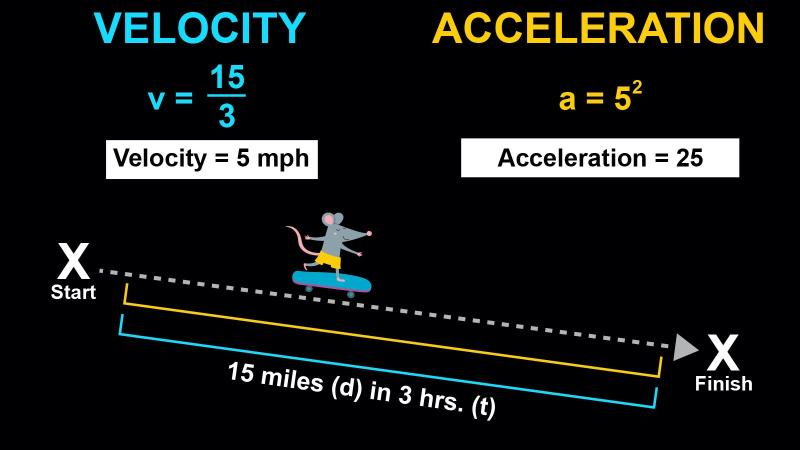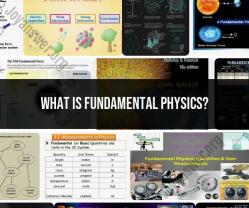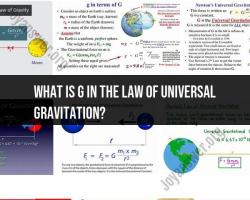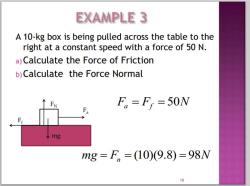What does acceleration have to do with velocity?
Acceleration and velocity are intimately connected in the realm of physics.
Velocity is a measure of an object's speed and direction. It's a vector quantity, meaning it has both magnitude (speed) and direction. For instance, a car traveling at 60 miles per hour due north has a velocity of 60 mph north.
Acceleration, on the other hand, is the rate of change of velocity. It can mean an increase or decrease in speed, a change in direction, or both. When an object accelerates, its velocity changes.
The relationship between acceleration and velocity can be understood through Newton's second law of motion: , where is the force applied to an object, is its mass, and is its acceleration.
This law can be rearranged to find the relationship between acceleration and velocity: .
When a force acts on an object, it can cause a change in its velocity, resulting in acceleration. This change can occur in various ways:
Speeding up: If the force applied is in the same direction as the object's motion, it causes the object to accelerate in that direction, increasing its velocity.
Slowing down: If the force applied is opposite to the object's motion, it causes negative acceleration (deceleration or slowing down), reducing its velocity.
Changing direction: Even if the speed remains constant, a change in direction also means a change in velocity. This change in velocity is also described as acceleration, even though the speed may not change.
In essence, acceleration and velocity are interrelated because acceleration describes how an object's velocity changes over time. Whether an object is speeding up, slowing down, or changing direction, it is undergoing acceleration, reflecting the changes in its velocity.
The Connection Between Acceleration and Velocity
Acceleration and velocity are two fundamental concepts in kinematics, the branch of physics that deals with the motion of objects. While they are related, they represent different aspects of motion.
Velocity is a measure of the rate of change of an object's position, typically expressed in units of meters per second (m/s) or kilometers per hour (km/h). It indicates both the speed and direction of an object's motion.
Acceleration, on the other hand, is a measure of the rate of change of an object's velocity. It describes how quickly an object's speed or direction is changing, regardless of its current speed or direction. Acceleration is typically expressed in units of meters per second squared (m/s²).
Understanding the Role of Acceleration in Motion
Acceleration plays a central role in the analysis of motion. It is the cause of any change in an object's velocity. When an object accelerates, it can either speed up, slow down, or change direction.
Positive acceleration occurs when an object's velocity increases, causing it to speed up.
Negative acceleration, also known as deceleration, occurs when an object's velocity decreases, causing it to slow down.
Zero acceleration indicates that the object's velocity is not changing, meaning it is moving at a constant speed and direction.
Impact of Acceleration on Changes in Velocity
The direction of acceleration determines the specific change in velocity. If the acceleration is in the same direction as the object's initial velocity, it will cause the object to speed up. Conversely, if the acceleration is in the opposite direction of the initial velocity, it will cause the object to slow down.
When the acceleration is perpendicular to the object's initial velocity, it will cause the object to change direction without affecting its speed. This is evident in circular motion, where an object maintains a constant speed but continuously changes direction due to the centripetal acceleration.
Calculating Acceleration in Physical Sciences
The relationship between acceleration, velocity, and time can be expressed mathematically using the following equations:
- Average acceleration: a = (vf - vi) / t
where:
a is the average accelerationvf is the final velocityvi is the initial velocityt is the time interval
- Instantaneous acceleration: a = lim (Δv / Δt) as Δt → 0
where:
a is the instantaneous accelerationΔv is the change in velocityΔt is the time interval
These equations allow physicists and engineers to analyze the motion of objects and predict their behavior under various conditions.
Real-World Applications of Acceleration and Velocity
Acceleration and velocity are fundamental concepts that have numerous applications in various fields, including:
Physics: Acceleration and velocity are essential for understanding the motion of objects, from the movement of planets to the trajectory of projectiles.
Engineering: Engineers use acceleration and velocity calculations to design vehicles, structures, and machinery.
Sports: Athletes use acceleration and velocity to optimize their performance, such as sprinters maximizing their acceleration or pitchers controlling the velocity of their throws.
Transportation: Acceleration and velocity are crucial factors in transportation systems, from car accelerations during braking to aircraft velocities during flight.
Robotics: Acceleration control is essential for robots to perform precise and coordinated movements.
Understanding acceleration and velocity is fundamental to comprehending the motion of objects and their interactions with the physical world. These concepts have wide-ranging applications in science, engineering, and various aspects of our daily lives.













